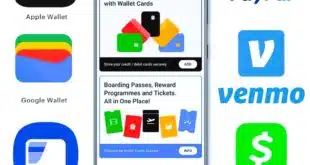Square Inc. introduced its payroll service for small businesses last June in California, and in the eight months since then Square Payroll has proven to be popular enough that the company added two more states in November and on Wednesday said it is expanding into five more.
But while Square won’t say how many businesses are using Square Payroll, it does make plain that the service not only represents incremental revenue, it also brings new, and larger, potential clients to Square’s bedrock payment-processing business.
Square Payroll allows business owners to automate the task of managing hourly and salaried wages, determining the amounts to be paid, handling the payments, and filing the required paperwork. The application also tracks employee sick time and time off.
Besides California, Square has now launched the service in Alaska, Florida, Texas, Nevada, New Hampshire, South Dakota, and Tennessee. More states are coming, Square says. So far, the eight states account for 30% of independent businesses in the U.S.
Clearly, Payroll is designed to open a new, related revenue stream for Square. The company charges $20 per month plus $5 per employee paid in a given month. But the app likely appeals to the sort of merchants Square is trying to attract to its basic payment service, observers say. “I don’t believe merchants are looking for payroll from their payment providers per se, I believe they are looking for an easy-to-use solution,” says Adil Moussa, principal at Omaha-based AdilConsulting. “The opportunity is in cross-selling an existing merchant with whom you have a trust relationship.”
That cross-selling opportunity could be significant. Square says 15% of businesses signed up for Payroll so far are not using Square for payments processing. In this sense, Square Payroll differs from Square Capital, the San Francisco company’s cash-advance service, which relies on cash flow from card processing.
And the Payroll clients tend to be larger businesses than the ones that have agreed to use Square’s tablets and smart-phone readers to run payment cards. The gross payments volume of a Payroll client is six times that of the average payments client, Square says.
To be sure, Square isn’t the only payments provider that has spotted this opportunity. Both Heartland Payments Systems Inc. and Intuit Inc., for example, offer payroll services on top of payments processing. Indeed, Square in 2013 struck a deal to integrate its Square Register point-of-sale service with Intuit’s QuickBooks accounting tool, though a Square spokesman says the Square Payroll application is independent of that integration, which is still live
In some cases, such as those of Intuit and Heartland, the client demographic is different from that attracted to Square, Moussa points out. While Intuit with its QuickBooks software tends to serve invoice-based businesses, for example, Square targets retail businesses.
“I believe that positioning is key here,” says Moussa. “The demographics and psychographics of Square users is different than that of Intuit and Heartland. Square users are younger and ‘hipper.’ Heartland appeals to more mature and established businesses and business owners and Intuit plays in the middle.”




